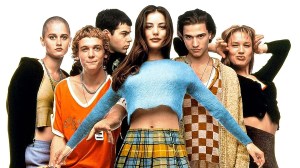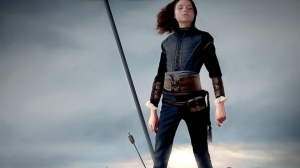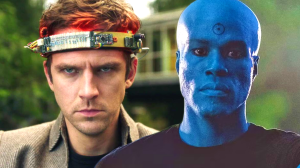
Religious tales have been captivating fanatics for centuries, regardless of whatever objective truth might be chronicled in any tomes. Regardless of how much faith you put into any of these stories, it’s hard to argue with the power they hold in the world in any number of ways, whether it’s giving believers the hope to carry them through each and every day, or followers attempting to weaponize passages to push their own agendas. What The Goddamned: The Virgin Brides reminds us of is the eloquent nature of sacred texts and how, when interpreted as readers see fit, they can conjure some of the most horrifying imagery imaginable, both literally and figuratively.
Videos by ComicBook.com
Inspired by Genesis 6:4, “…the sons of God came in unto the daughters of men. And they bore children to them…” Virgin Brides offers readers a village seemingly devoid of men, though this hardly protects the female community from being subjected to patriarchal rule. When younger residents become women, they become Brides to the Sons of God, which is a far more horrifying experience than any of them could anticipate, as they were led to believe this is the most joyous day in their lives. As Jael and Sharri approach womanhood, they catch a glimpse of what’s really happening in the mountains, which could spell doom without decisive action.
Virgin Brides continues the conceptual exercise that writer Jason Aaron and artist R.M. Guéra began with their first installment of The Goddamned, as they confirm the powerful imagery evoked from sacred texts which have long held somewhat specific connotations. While the inspiration passage from Genesis has a grander meaning in context, the tease of what it means for The Virgin Brides offers a much more sinister interpretation—reminding readers of how evocative and effective the language in its source material remains.
It seems like a point of redundancy to praise Aaron for his mastery of delivering compelling dialogue in the realms of mythology and fantasy, as he’s proven this for years to legions of fans across a number of titles. At this point, diving into one of his comics and not finding romanticized mythology that never feels pretentious would come as more of a shock than noting his mastery of such a tone. In this regard, Aaron has set such a standard for himself that we wished that he would have some sort of stumble, if only because that may be the only way surprise to fans.
To fully encapsulate the religious feeling of this tale, Guéra’s artwork aided by Giulia Brusco’s colors, read more like mythological tapestries than typical panels in a comic book. Every page is fully utilized to create an immersive experience for the reader, sometimes to the detriment of the focus in a single panel, . We can spend just as much time admiring the intricacies of the panels in which the dialogue is taking place as we spend looking towards the page’s perimeter to scan details in the scenery. Whether it’s scenes full of characters in lush landscapes or moments of intimate conversations obscured via darkness, no speck of real estate is ignored by Guéra or Brusco’s eyes.
With The Goddamned now teasing that it will tackle the horrors of the patriarchy, at least to some degree, we can’t help but notice the irony of the male-dominated creative team. Readers might not pick up on that fact while consuming the series and—while the women might often be scantily clad they aren’t being sexualized—it’s surely a point worth noting. In particular, one scene in which an older member of the community inspects the naked, prepubescent girls to see if they’ve had their first menstruation (thus making them eligible to become a new bride) does come with a certain degree of discomfort in regards to the creative team who crafted the scene.
The debut issue of The Goddamned: The Virgin Brides establishes itself as patriarchal exploitation of religious texts akin to the dystopic The Handmaid’s Tale. Yet, the landscape and imagery feel evocative of the more recent Midsommar, while also establishing the potential to critique our current culture of misogyny in fascinating ways. It all merges to create a compelling bit of commentary in addition to delivering as an unsettling piece of escapism.
Published by Image Comics
On July 1, 2020
Written by Jason Aaron
Art by R.M. Guéra
Colors by Giulia Brusco
Letters and Design by Jared K. Fletcher








